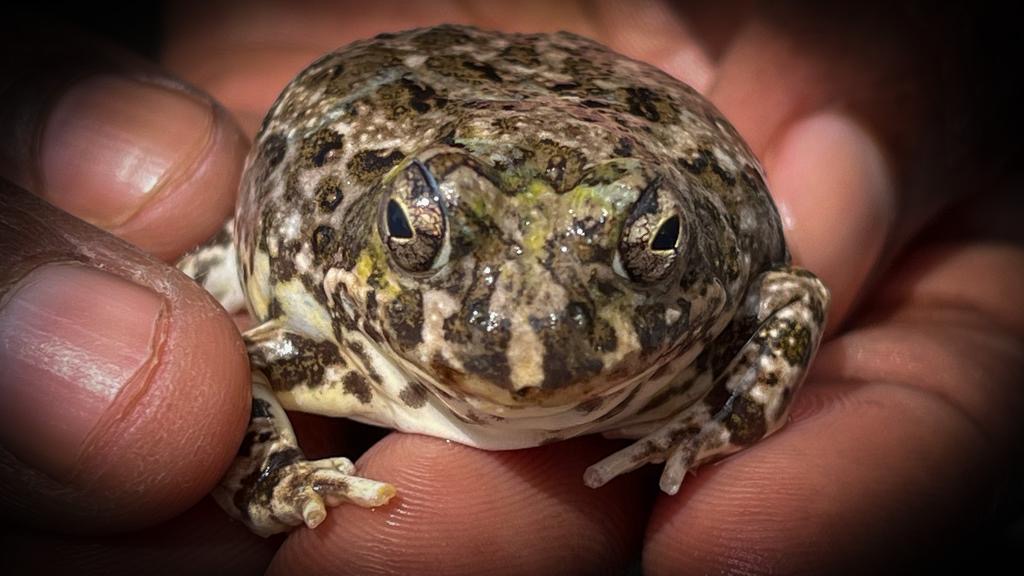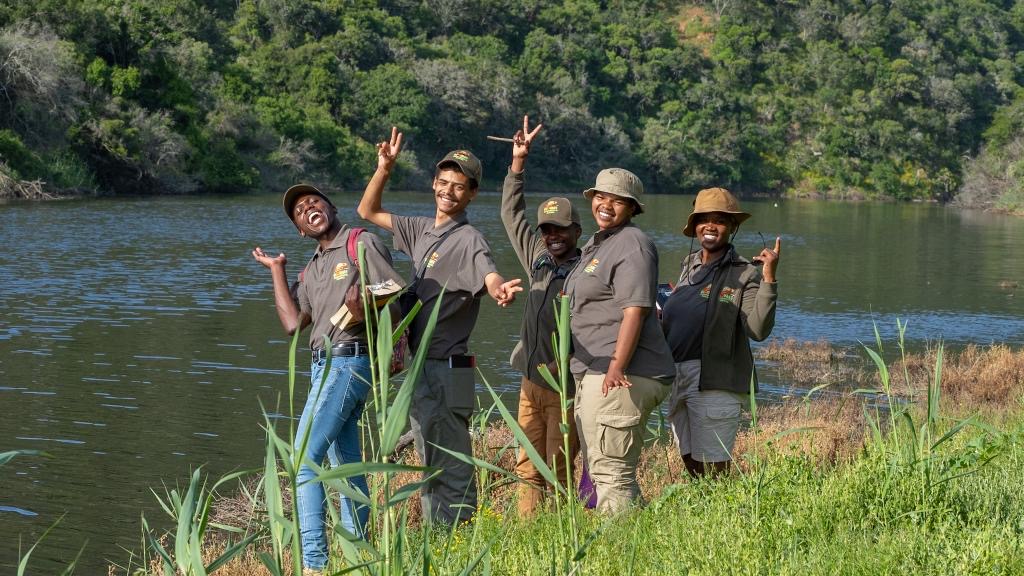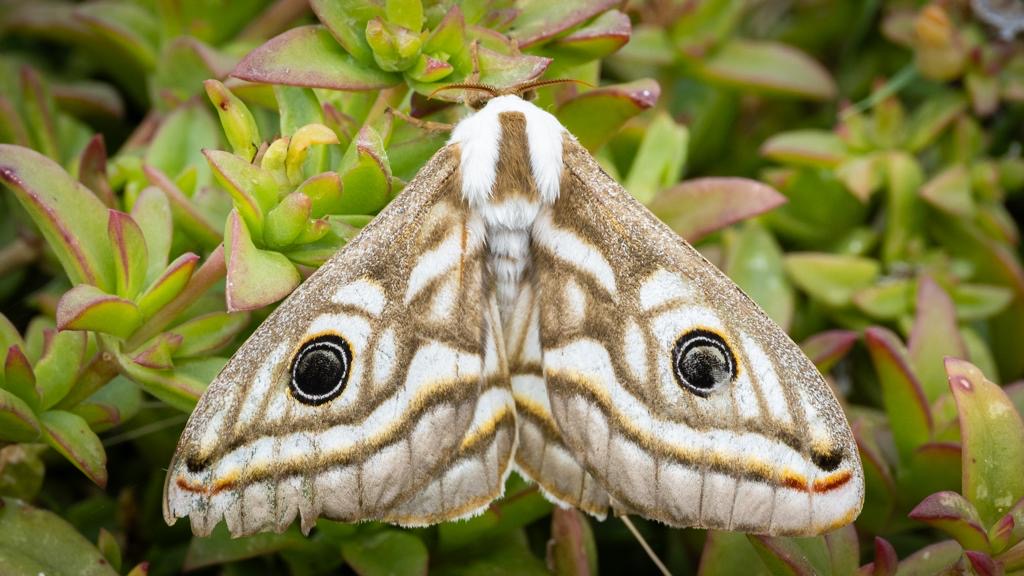When I arrived at ULOVANE in Tanglewood, I felt a mix of nervousness and excitement. Leaving my family in Kwanobuhle to pursue something I deeply care about, I wasn’t sure what to expect. As we entered, the first creatures to greet us were the majestic giraffes, towering above everything else. They were like gentle giants, and it made me feel a little less anxious. On our way to the house, we spotted Cape mountain zebras munching on the grasslands. It was quite a sight to see these beautiful creatures up close. Mr. Scalk, his wife Candice, their sons, Nicki from WFA, our House Mother Sis’Buki, and other students welcomed us warmly, making us feel at home in this new place.

The first week of the course was a whirlwind of activity. We were busy studying and completing our workbooks. During the day, we went on game drives, exploring the surroundings. As the weeks passed, our adventures led us to Buffalo-Kloof. Here, we encountered animals we had only heard about or seen in pictures. One unforgettable moment was spotting a Cape Cobra, a stunning reptile. It was the first time any of us had seen a cobra, and the excitement was palpable. We even whispered in fear of the snake hearing us, only to realize later that snakes can’t actually hear. It was a funny realization and a highlight of my time there.



As time went on, we bonded as students and learned a lot from our lessons. I discovered the right way to conduct myself during drives and walks with guests. Our journey took us to Amakhala Game Reserve, where we met seasoned guides. Hearing them communicate in Xhosa on the radio, discreetly naming animals for guests, was really fascinating. Meeting Karin, one of Mr. Scalk’s former students now working at Shamwari, was inspiring. Her insights were valuable, and we learned a great deal from her. We even had the privilege of meeting Mr. Lee Gutteridge, a writer of some of our tracking books. His tracking tips added a fun twist to our learning.



Tanglewood, our cherished home, has burst into a vibrant kaleidoscope of life after the recent rains! The sight of wildflowers is simply breathtaking; golden carpets stretch across the landscape, while smaller purple, orange, and pink blooms surprise us each passing day. Back in October, the dam on-site was parched, holding very little water. Now, it’s a bustling hub overflowing with life. This surge of life unfolding at Tanglewood has been an incredible experience for us!
Every day, as we traverse the reserve on foot or in our drives, we stumble upon fresh and captivating discoveries. It’s a treasure trove of new spots, diverse plant life, enchanting wildlife, and a riot of blossoms. To witness this explosion of life is an absolute privilege, and we’re deeply honored to be a part of it.
During our drives, we noticed a springbok always hanging out with the impalas. It was unusual, and we playfully named him “Naas.” Naming the animals became a sweet tradition for us. We have a family of Cape Mountain Zebras, and we gave the male zebra the name “Elizabedi.” Even our avian neighbors, the Lesser Striped Swallows, became familiar to us, and we named them Albus, Janet Jackson, and Tom. Not to forget Bitholium, the toad, who made occasional nighttime appearances on our doorstep.



My time here at ULOVANE has taught me so much about nature. I’m grateful for this knowledge, and I hope to share it with the youth back home. Teaching them about conservation could help them educate their families about keeping our world healthy. Being surrounded by nature is not just beautiful; it’s also a source of healing and gives me a sense of purpose and joy. – Anele (Currently Guest Relations & Cheetah Ambassador at Nyosi Game Reserve)
Believe in your heart that you’re meant to live a life full of passion, purpose, magic and miracles.”
― Roy T. Bennet

Schalk’s Nature Notes & Visuals


Discovery of why the Lesser striped Swallows prefer to nest under the roof of our homes.
They could build their mud nests with long entrance tunnels under any type of ledge, but they still prefer to construct their nests close to us as humans. These Lesser striped Swallows established that most birds are scared of humans, but they have figured out that we actually mean them no harm. The truth is that there are birds, the White-rumped Swifts, who are after the Lesser striped Swallows’ nests, these White-rumped Swifts air dive in groups of 5 to 10 birds to attempt to bully the Lesser striped Swallows to abandon their carefully constructed nests, which the White-rumped Swifts are unable to construct. The White-rumped Swifts either bully and irritate the Swallows until they abandon their nests or these Swifts will enter the Swallow’s mud nests and remove the eggs or the chicks of the Lesser striped Swallows as a final reason for the Swallows to abandon their nests. The Swifts then take over the mud nests to lay their own eggs in and to rear their chicks in and they don’t have to go through the effort of constructing these elaborate mud nests. So for this reason, the Lesser striped Swallows have made their homes as close as possible to humans which most animals fear with their lives. – Schalk
Get ready for a captivating visual journey courtesy of Schalk. His lens captures the pure essence of wildlife and nature, offering a breathtaking view of our untamed world.








Editors Note: Embarking on an ambitious journey, Wilderness Foundation Africa and Ulovane Environmental Training have joined forces in an unprecedented collaboration. Their shared vision aims at revolutionizing the guiding landscape in the Eastern Cape. Through this groundbreaking partnership, aspiring guides are undergoing immersive training through Ulovane’s acclaimed program, integrated within WFA’s esteemed Umzi Wethu accredited vocational skills training. This innovative initiative has been made possible by the generous support and funding from Graham Beck Wines, CCFA, and various other stakeholders. We are so thankful!!

Tanglewood Dam flowing for the first time in years! What a blessing!
